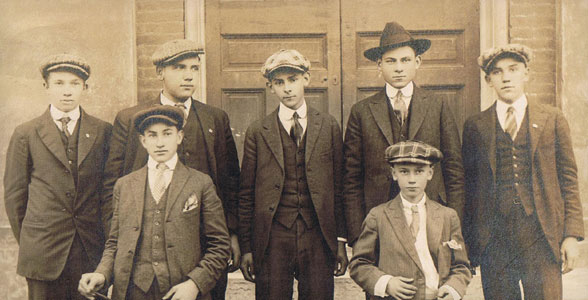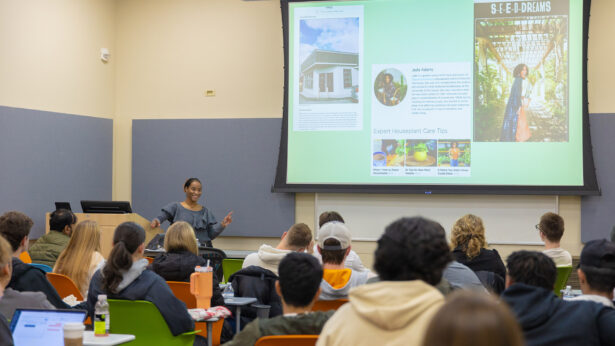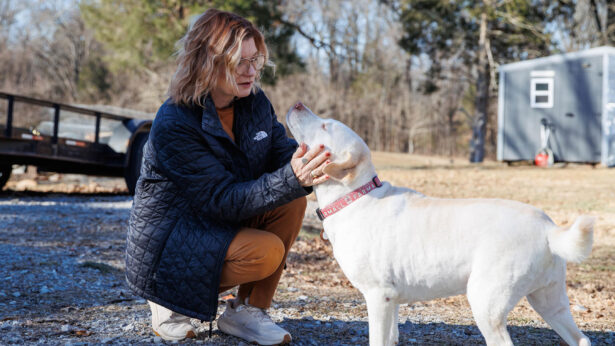For 100 years, UT Extension has been making life better for Tennessee farmers, families, and youth. True to the land-grant mission of public education, Extension has helped transform Tennessee with research-based outreach and educational programs in agricultural sciences and resource management, as well as family and consumer sciences and youth development.
“We have helped producers increase their production and profits, enhanced family life and health, and served more than four million young Tennesseans along the way,” says Dr. Tim Cross, dean of UT Extension.
Extension and 4-H in Tennessee predate the 1914 Smith-Lever Act that established a national network of agricultural agents and family and consumer scientists to help develop rural America. As early as 1910, two county-based agents were helping Tennesseans with cotton production and home canning. On July 1, 1914, some 20 county agents, 22 home demonstration agents, and 8 other staff members, who were already providing agricultural and rural education, were organized under the Smith-Lever Act as part of the UT Division of Extension.
Today, as the outreach unit of the UT Institute of Agriculture, Extension operates an office in every Tennessee county and delivers educational programs using research-based information to farmers, families, youth, and communities in both rural and urban settings. Educational programs range from gardening and landscaping to nutrition, animal health, and family money management. The programs are available to all county residents, often at no charge.
“For a hundred years Extension agents have represented a two-way link between Tennesseans and university specialists, scientists, and researchers,” Cross says. “That special relationship and the education and economic development it fosters are the hallmarks of Extension.
“Last year UT Extension had more than 4.8 million contacts with Tennessee citizens, and the overall economic impact of these activities returned more than $343 million in estimated economic benefits.”
Extension’s 4-H program has 302,000 members, one of the largest rosters of any state in the U.S. 4-H helps young people with leadership and citizenship skills, self-esteem, and supplemental learning.
Take a tour of Tennessee history with UT Extension:
1910
First agricultural agent employed in Tennessee. By the end of February 1911, there were six county agents: G. B. Rhodes, Tipton County; R. L. Moore, Dyer; J. B. Skinner, Obion; L. M. McCollum, Chester; O. W. Erwin, McNairy; and A. R. Bridger, Crockett. These men were farmers employed as county agents three days each week, nine months of the year, and were permitted to look after their farms the other three days.
Virginia P. Moore was appointed on December 10 to be the first agent to work with women and girls in developing canning clubs. Her salary was $1,200 per year.
1914
On July 1, the College of Agriculture of the University of Tennessee and the USDA, cooperating under the provisions of the Smith-Lever Act, organized the Division of Extension. The first Extension director was Charles A. Keffer.
1917
The first African American 4-H Clubs in Tennessee were organized in Fayette County. When the U.S. entered World War I, the number of African American agents in Fayette County increased to five women and seven men. African American agents were highly respected in their counties—many of them were called “Professor.”
1922
Wilson County held a camp for home demonstration women, believed to be the first such camp held in the South.
1927
First Tennessee delegation attended National 4-H Camp.
1929
4-H’ers camp in Columbia.
1944
First Tennessee 4-H Council elected at State 4-H Short Course (later known as 4-H Roundup). Lynell Styke of Greene County served as first president.
U.S. Maritime Commission honored Tennessee 4-H Club members for their contribution to World War II efforts by granting them the honor of naming a ship. They chose to honor former state Extension director Charles A. Keffer. Two Tennessee 4-H members assisted in christening the Liberty Ship S.S. Charles A. Keffer.
1947
Clyde Austin of Greeneville gave land for the 4-H camp in that city. The first camp was held in 1948 after a campaign raised funds to complete construction.
1948
First 4-H Congress held in Nashville. Don Bowman from Washington County served as the first congress governor.
UT received a quitclaim deed to the POW camp in Crossville. This became the Clyde M. York 4-H Training Center.
1959
Extension Home Economics diversified into new areas like consumer education as the urban consumer became a new audience for Extension information delivered through mass media.
1964
With the passage of the Civil Rights Act, African American and Caucasian agents were moved into one county Extension office.
1965
Thomas McCutchen begins to explore no-till conservation tillage practices at the Research and Education Center at Milan.
1969
The Expanded Food and Nutrition Education Program started in Tennessee in 10 pilot counties: Shelby, Gibson, Robertson, Davidson, Warren, Coffee, DeKalb, Putnam, Roane, and Hawkins.
1969
The UT Institute of Agriculture (UTIA) was formed under the leadership of Dr. Webster Pendergrass. The UTIA included the College of Agriculture (now CASNR), the Agricultural Experiment Station (now AgResearch), and the Agricultural Extension Service (now UT Extension).
1971
Increased use of print and electronic media enabled Extension to reach larger and more diverse groups.
UT and Tennessee State begin cooperative Extension programming.
1972
Tennessee Junior Livestock Exposition began, combining the junior beef heifer show (started in the 1950s) and the junior market steer show into one of the largest junior livestock shows in the South.
1986
Tennessee farmers started using the MANAGE program, an intensive educational package teaching financial management, family economics, and stress management.
1990
Tennessee Extension moved into the electronic age when all 95 county offices were equipped with computers. Extension agents began using the internet to solve age-old problems, and many educational programs began delivery via videoconference or other electronic media.
2002
UTIA and Tennessee Farm Bureau Federation joined forces to establish the Center for Profitable Agriculture.
2004
In July, the UT Agricultural Extension Service changed its name to “UT Extension” to reflect its broader mission.
2010
One hundred years of UT Extension, transforming Tennessee through outreach and education services to all the state’s citizens.
For more information, visit utextension.tennessee.edu/100years
*****
How It Began
As early as 1912, University of Tennessee president Dr. Brown Ayres made public plans for a formal agricultural extension structure. If each county could employ an agricultural expert who would cooperate with county farmers, practically every interested farmer could be reached and could benefit from farm demonstrations.
“If the plans which we have in mind for the future development of the University of Tennessee College of Agriculture are carried out, we shall be able to reach thousands of farmers where we now reach hundreds,” Ayres said in a newspaper interview that year.
Early activities included teaching farm “ladies” more efficient ways to can and to raise poultry. Home demonstration agents were first employed as educators during the canning season. They were often farm-reared rural schoolteachers who understood farm family life. They “knew something about housekeeping and were not afraid to drive around the country in a buggy alone,” Claire E. Gilbert reported in her unpublished “History of Tennessee Home Economics Extension.”
—Maurine Taylor, “Transforming Tennessee,”
UT Extension’s centennial overview of its history



